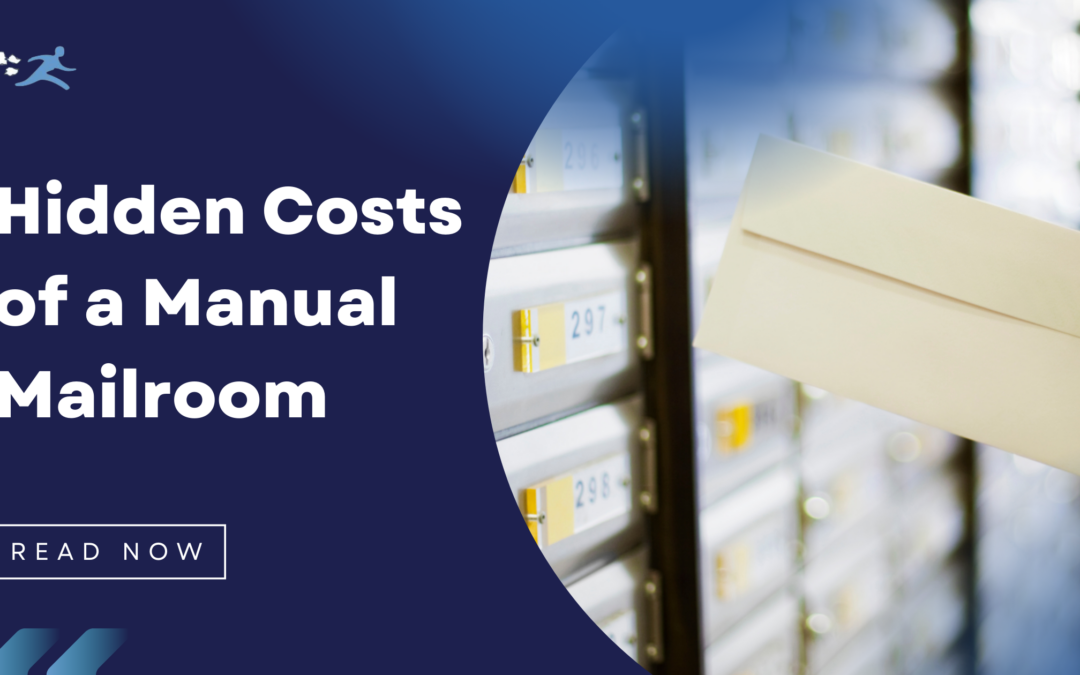The mailroom is often considered the heartbeat of office communication, especially in industries where physical documents still play a critical role. Yet, many organizations overlook the real costs associated with a manual mailroom, focusing only on surface-level expenses like staffing and supplies. However, beneath the surface lies a range of hidden costs that can quietly drain resources, reduce productivity, and even impact company growth.
In this blog, we’ll explore these hidden costs and discuss why transitioning to a digital or automated mailroom can be a game changer.
1. Labor Inefficiency
The most obvious cost in a manual mailroom is labor, but the inefficiencies associated with manual sorting, filing, and distributing mail can be astronomical. Think about the time employees spend opening envelopes, sorting through documents, and delivering physical mail across various departments. This process eats away at hours of employee productivity, particularly when these tasks could be automated.
Consider this: employees can spend upwards of 2-3 hours daily on repetitive mail-handling tasks. Over time, this translates into thousands of wasted hours annually—hours that could be better spent on more valuable, revenue-generating tasks.
2. Human Error
Where there’s manual work, there’s room for human error. A mislabeled envelope or a misplaced document can lead to lost mail, delays in important business processes, and damaged client relationships. Errors in the mailroom can disrupt workflow, particularly when crucial documents like contracts or invoices are lost or delayed.
Each error, no matter how small, can result in additional time and resources spent on tracking down missing mail or rectifying mistakes. These costs add up quickly, especially when time-sensitive documents are involved.
3. Security Risks
Mailrooms handle sensitive information—contracts, legal documents, payroll, client data—and in a manual setting, controlling access to these materials can be difficult. Without strict security protocols in place, mail could fall into the wrong hands, increasing the risk of data breaches or compliance violations.
Physical mail can easily be stolen, misplaced, or tampered with, resulting in potential compliance issues and costly penalties, especially for businesses in regulated industries like healthcare or finance.
4. Storage Costs
Physical mail requires space for sorting, storing, and archiving. Many businesses overlook the cost of maintaining this physical infrastructure. Think about the expenses involved in maintaining filing cabinets, storage rooms, or even paying for off-site document storage.
Beyond the physical space, there’s also the cost of time—filing, retrieving, and organizing documents takes manpower. These costs become particularly burdensome when space runs out, requiring additional investments in storage solutions or offsite facilities.
5. Slowed Decision-Making
In today’s fast-paced business environment, speed is critical. Waiting for physical mail to arrive, be processed, and delivered can cause unnecessary delays in decision-making. Slow internal communication can halt business processes, delay important projects, and ultimately cost you opportunities.
The manual flow of paper can make it challenging to track documents, create bottlenecks in workflows, and leave employees waiting on crucial information. The slower your mailroom, the slower your entire business.
6. Environmental Impact
There’s also the often-overlooked cost of the environmental impact. The paper, ink, and energy required for manual mailroom processes contribute to your company’s carbon footprint. Transitioning to a digital mailroom reduces paper waste and other environmental costs, which can improve your corporate social responsibility (CSR) efforts and reputation.
The Solution: Digital and Automated Mailrooms
The hidden costs of a manual mailroom underscore the need for modernization. Implementing a digital or automated mailroom offers several benefits:
- Increased Efficiency: Automated systems can sort, scan, and route mail faster than humans, freeing up employees to focus on higher-value tasks.
- Reduced Errors: Automation reduces the likelihood of mail being misplaced or lost, minimizing the risk of costly mistakes.
- Enhanced Security: Digitizing mail ensures sensitive information is securely routed to the right person, reducing the risk of data breaches.
- Cost Savings: Without the need for extensive storage and paper supplies, companies can significantly reduce operational costs.
Transitioning to a digital mailroom isn’t just about saving money—it’s about creating a more efficient, secure, and sustainable work environment.
Conclusion
Manual mailrooms might seem like a cost-effective solution, but the hidden expenses tied to inefficiencies, human error, security risks, and storage can cost companies far more than they realize. By making the shift to digital or automated mailroom services, businesses can optimize their operations, enhance security, and ultimately save money in the long run.
Is it time for your business to make the switch?
Interested in learning more about digital mailroom solutions? Reach out to our team today to explore how automation can transform your mailroom operations and eliminate hidden costs.

